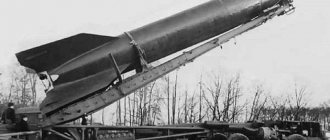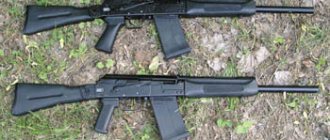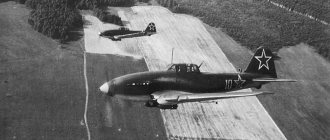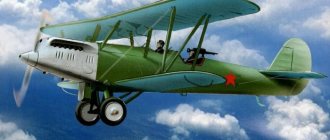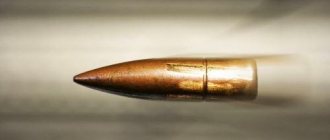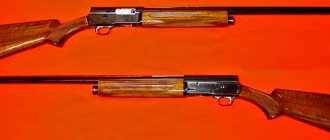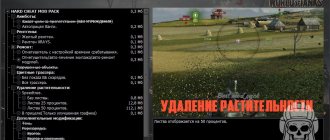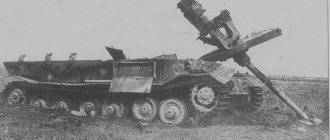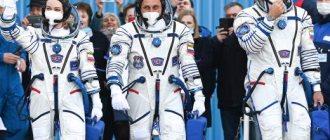Sergei Korolev - biography
Sergei Pavlovich Korolev - Twice hero of socialist labor, Soviet scientist, designer of rocket and space systems, chairman of the Council of Chief Designers of the USSR, academician, under whose leadership the world's first intercontinental ballistic missiles were created, with whose name the creation of a “nuclear missile shield” is directly connected THE USSR.
Thanks to the brilliant designer, the space age is counted according to Moscow time - Sergei Pavlovich remained the “great nameless” until the end of his days. The veil of secrecy and top secrecy was lifted only after his death.
“Enemy of the People” and Chief Designer at the same time
Since September 1940, Korolev served his sentence in TsKB-29, which was headed by the “convict” Tupolev. During the war years, at the same rank of prisoners, they, together with Tupolev, developed the Tu-2. Later, the future Chief Designer worked in a similar “sharashka” (the so-called secret research or design institutes, where scientists and engineers, usually “enemies of the people,” worked under the control of state security agencies), where they developed jet engines. In 1944 he was released from prison, and in September 1945 he was sent to Germany as part of a commission to study German captured equipment, primarily rocketry.
In 1946, Korolev was appointed Chief Designer of ballistic missiles and head of the NII-88 department. Under his leadership, the first ballistic missiles in the Soviet Union were consistently created (which practically did not use aerodynamics during flight).
Since August 1956, Sergei Korolev has been the director and chief designer of the largest rocket center in the state, OKB-1, and has supervised the activities of many research institutes and design bureaus. All this time he was still technically an "enemy of the people." He was rehabilitated only on April 18, 1957, six months before he launched the world’s first artificial Earth satellite.
Childhood and youth, family
On New Year's Eve 1906 (old style), now January 12, 1907 in Zhitomir, a boy was born into the family of a gymnasium teacher, Pavel Yakovlevich Korolev, and the daughter of a Nizhyn merchant, Maria Nikolaevna Moskalenko.
They named him Seryozha. The family soon broke up - Korolev had a difficult character, Marusya did not love her husband, her parents insisted on her marriage so that her daughter would not go to study courses in St. Petersburg, as she dreamed of. Having separated from her husband, she actually entered the Higher Women's Courses, only in Kyiv, and took her son Sergei to his grandparents in Nizhyn.
Seryozha Korolev in childhood, with his mother and grandmother. The boy’s numerous relatives loved and spoiled him, but Seryozha saw little parental affection: his mother came only on Saturdays, and they did not see his father at all. The boy hardly knew how to play with his peers - he was not allowed outside the gate, because Maria Nikolaevna was afraid that her ex-husband would kidnap her son. Many years later, Sergei Korolev will say: “I, strictly speaking, did not have a childhood...”
In 1916, Maria Nikolaevna married Grigory Balanin: after graduating from the St. Petersburg Teachers' Institute, he worked in Finland and Germany, and then, returning from abroad with an engineering degree, he also graduated from the Kiev Polytechnic Institute. In 1917, the Balanin family moved to Odessa, where Grigory Mikhailovich became the head of the port power plant.
Here, in Odessa, Sergei Korolev went to the gymnasium, here he was caught by the 1917 revolution, civil war and intervention, here he entered construction and professional school No. 1, which provided not only a general secondary education, but also a construction profession. At school he met his first love - Ksenia Vincentini (everyone called the girl Lyalya). And already in Odessa I became seriously interested in aviation.
Memory
In memory of the designer, the house in Zhitomir where Sergei Pavlovich was born was converted into a museum. A memorial museum was also opened in Moscow. The engineer’s name is given to the city where he worked, as well as many streets and avenues not only in Russia, but also in the CIS countries. Monuments to the scientist have been unveiled in different parts of the world (some sculptures depict Korolev together with Yuri Gagarin, for example in Taganrog, in front of the building of the Radio Engineering Institute). Space objects are also named in honor of the space conqueror.
Posted by Denis Veselkov on Saturday, January 8, 2022
Grandson and great-grandson of Sergei Korolev with Elon Musk
The largest conference room at SpaceX, headed by Elon Musk, bears the name of the researcher. This American entrepreneur, billionaire and engineer is compared by many to Sergei Pavlovich in terms of the progressiveness of the ideas proposed and the objects created for space exploration. In 2021, the American gave a tour of the plant producing Crew Dragon ships for the grandson and great-grandson of the Soviet designer. Musk noted that together with his team, when developing innovative developments, he turned to Korolev’s achievements.
The figure of Sergei Pavlovich (or his prototype) appears in Soviet and Russian films. At different times, the actors Georgy Zhzhenov, Kirill Lavrov, Vladimir Ilyin and others managed to try on the image of the designer. Natalia Sergeevna’s daughter also dedicated the book to the biography of the scientist.
Carier start
In the summer of 1924, Sergei Korolev entered the mechanical engineering department of the Kyiv Polytechnic Institute. There was a gliding club at the Polytechnic, and Sergei came there on the very first days of his studies. He spent all his free time in the institute’s workshops, where they built gliders, but he also gnawed at “science” with no less persistence. Many years later, Sergei recalled: “I hit myself on the forehead - study, fool, without science you can’t do anything in life...”
Sergei Korolev in his youth When Sergei’s mother and stepfather moved to Moscow, Korolev Jr. also decided to move to the capital.
He was enrolled in the aviation department of the Moscow Higher Technical School - the famous Baumanka. Having enrolled in the flight department of an amateur glider school, he went to the glider station in Gorki on Sundays, flew and built gliders. The leader of his graduation project was A.N. Tupolev. Later, Andrei Nikolaevich said: “I quickly became convinced that this man knows how to look at the root... I had an excellent impression of Korolev as a person and as a talented designer. He was a man infinitely devoted to his work and his plans.” ...In 1940, a teacher and a student will meet in prison.
Going to Koktebel in September 1929, Korolev set a record: he soared on his glider for 4 hours 19 minutes (flights of other gliders lasted no more than 3 hours). The following year, already working at the Central Clinical Hospital and again arriving in Crimea, Sergei unexpectedly fell ill with typhoid fever.
The disease caused complications that required complex surgery. The case ended with craniotomy and temporary disability. But he returned to the Central Clinical Hospital anyway - in the spring of 1931. And in the summer, Korolev’s school love, Lyalya Vincentini (after graduating from the Kharkov Pharmaceutical Institute, she worked in Alchevsk), finally agreed to marry him.
Since the autumn of 1931, Sergei Pavlovich was actively involved in aircraft with jet engines, dreaming of creating a rocket plane. Korolev’s dream led him to the newly formed TsGIRD - the Central Group for the Study of Jet Propulsion. In July 1932, he was appointed head of this organization. The unique qualities of Korolev as a leader manifested themselves here: according to the characteristics of O M.K. Tikhonravov, Sergei Pavlovich “combined outstanding design talent with deep scientific intuition and brilliant organizational skills.”
At first, the “amateur” GIRD did not pay salaries, did not issue food cards, group members pooled money for equipment; The Girdovites themselves jokingly deciphered the name of the organization as follows: “A group of engineers working for nothing.” But there was an amazing atmosphere of real enthusiasm and high intellectual creativity here. GIRD employees worked selflessly, and over time, Osoaviakhim, becoming interested in the work of the group, gave it official status and began paying employees salaries.
Rocketchikov was supported by M.N. Tukhachevsky, who did a lot to ensure that two groups - the Leningrad GDL (Gas Dynamic Laboratory, created back in 1921) and the Moscow GIRD merged into a single structure - the Jet Research Institute (RNII). The institute was born in pain, but finally, in 1933, it was opened.
The head of the institute was I.T. Kleimenov is a party member, a career military man with a good education, and his deputy is Sergei Korolev. Kleimenov did not work well with his deputy and replaced him with G.E. Langemak is a brilliant specialist, a man of the highest erudition. Sergei Pavlovich was transferred to the position of senior engineer, and a year later, in 1935, he was put in charge of the department created to develop his subject matter on the rocket plane and cruise missile.
It seemed that everything was going great: in the spring of 1935, a daughter, Natasha, was born into the Korolev family, a year later Sergei Pavlovich received a separate apartment (the first in his life!), the work was progressing successfully... When they were arrested in the case of a “fascist military conspiracy in the Red Army” and Tukhachevsky was shot, the staff of the RNII was under threat: the institute was the brainchild of a repressed marshal. Soon, almost simultaneously, on the night of November 2-3, 1937, Langemak and Kleimenov were arrested.
They were shot in January 1938, on the 11th and 10th, respectively. And V.P. Glushko, the founder of the Soviet rocket engine industry, who in 1936 became the Chief Designer of liquid rocket engines and headed one of the divisions at the RNII, was arrested a little later - March 23, 1938. At meetings they denounced “a gang of saboteurs who have made their nest at the institute.”
Education
In 1922 - 1924 studied at a construction and professional school. There he became close to the pilots of the Odessa hydraulic detachment. The young man anxiously watched the flight of winged machines over the sea and imagined how he would rise into the sky on this miracle. Sergei helped prepare planes for flight all summer. Having thoroughly studied the engine, Korolev became a valuable employee who was always ready to help. Therefore, all the mechanics and pilots liked him. At the age of 17, he created and defended the first project of a non-motorized aircraft, the K-5.
1924 – 1926 Studied at the Kiev Polytechnic Institute at the Faculty of Aviation Engineering.
1926 – 1929 continued to study at the Moscow Higher Technical School. Bauman. At the school he designed the Koktebel and Firebird gliders and proved himself to be a capable aircraft designer. He boldly defended his thesis on the project of the SK-4 light aircraft. Subsequently, several SK-4 and “Red Star” aircraft were produced according to Sergei’s design. On these aircraft, test pilot V.A. Stepanchonok performed aerobatics, a loop, at the VII All-Union Glider Meeting in Koktebel in 1930.
Arrest
In the spring of 1938, Korolev was hospitalized: during testing, the tanks on a rocket torpedo exploded, and one of the fragments crashed into his temple, leaving a crack in his skull.
A few days after going to work, on June 27, Sergei Pavlovich was also arrested. In prison, Korolev was “put on a conveyor belt”: he was not allowed to eat, drink, sleep, and was severely beaten. His lower jaw was broken. This will become clear only in 1966, when Korolev undergoes an operation that ends in his death. At the end of the 1980s, S.N. Efuni, leading anesthesiologist of the 4th Main Directorate of the USSR Ministry of Health, will tell journalist Y.K. Golovanov (the author of the book about Korolev) that Sergei Pavlovich needed to insert an endotracheal tube to administer anesthesia, and because of an old fracture his mouth could not open wide...
On September 27, 1938, Sergei Korolev was tried by the Military Collegium of the Supreme Court of the USSR. For participation in a “counter-revolutionary Trotskyist organization” that worked “to weaken the country’s defense power,” Sergei Pavlovich was sentenced to 10 years in prison. He was taken by stage to the Maldyak mine, where gold was mined.
He would not have survived the winter at the mine: out of the five thousand prisoners in the camp, no more than 100 people survived until spring. The Queen was saved by the fact that the new People’s Commissar of Internal Affairs, Lavrentiy Beria, resumed the practice of using intellectual prisoners in “sharashkas,” which had been successfully tested by the OGPU back in the late 1920s.
Just at this time, the famous pilot I Gromov responded to a request for help from Korolev’s mother, Maria Nikolaevna, who flew over the North Pole to America. He wrote directly to Beria: “I received a petition from citizen M.N. Balanina through the parliamentary line. (mother of prisoner Korolev) to review his case.
“I know Korolev as an honest, capable enthusiast and aircraft engineer.” Capable engineers were needed. When Korolev was told in the camp: “You will go to Moscow,” he began to cry. By that time he was swollen, lost 14 teeth, could barely move...
Many years will pass, and one day friends will gather in Sergei Pavlovich’s Ostankino house. The mansion's security will inquisitively examine the academician's guests. And, sitting at the table, the owner will suddenly say: “I just can’t get rid of the thought that at any moment they can come in and shout: “Queens!” Come on, you bastard, pack your things!..” In September 1940, Sergei Pavlovich was taken to the “sharashka” - TsKB-29-NKVD.
Cossack family
Sergei Korolev’s grandmother - Maria Matveevna Moskalenko (Fursa) - is the daughter of the former combatant Cossack Matvey Ivanovich Fursa, married to Evdokia Timofeevna Petrenko. She was from a family of Greek colonists who, under Bohdan Khmelnytsky, moved to the Hetmanate.
The family read a lot, discussed political events and played musical instruments. At the age of five, the boy learned the alphabet and learned to write. He had no friends or peers. They were afraid to let him leave the estate because his own father threatened to take him away. In Nezhin, Seryozha saw the first flight of an airplane piloted by pilot Utochkin, and enthusiastically told his grandmother: “Not only birds can fly.”
Work in KB
Starched tablecloths and napkins, cutlery, snow-white sheets, shower - all this shocked him.
The treatment of prisoners in the sharashka was the most polite. They were allowed to walk in the “monkey barn” - an area on the roof surrounded by bars. Occasionally they were taken to see their relatives. After dinner, they were allowed to read... When Beria ordered that the Central Clinical Hospital be supplied with cigarettes and that food be organized “at the restaurant level,” the chief overseer of the sharashka was horrified: “Where can I get you a restaurant cook?!”
“Yes, at least at National,” answered Tupolev, who was also sitting in the Central Clinical Hospital, calmly. - Arrest the chef and come here. What's it worth to you?
Many years later, the “sharashka” would be described by A. Solzhenitsyn in the novel “In the First Circle”...
With the beginning of the Great Patriotic War, specialists from TsKB-29 were evacuated to Omsk - an aircraft plant was being set up there. After some time, V.P. Glushko asked Korolev, his former colleague at the RNII, to come to him: Valentin Petrovich headed the OKB in Kazan, where rocket engines were designed. From 1942 to 1946, Sergei Pavlovich worked as Deputy Chief Engine Designer for flight testing.
The Great Patriotic War
While in prison, Korolev acted as an assistant to Lev Theremin in the department involved in the design of unmanned aerial vehicles. Later, under the leadership of Andrei Tupolev, he developed several objects, among which were bombers and aerial torpedoes. In December 1941, Tupolev’s team was evacuated to Omsk. Here the Tu-2 aircraft was put into production.
The designer’s success contributed to his transfer to Kazan, where Korolev began improving rocket engines, which were then used in aviation. In 1943, the Pe-2 dive bomber flew - Sergei Pavlovich had a hand in improving the characteristics of this model. A year later, the engineer was released early by order of Joseph Stalin, and then began working as a teacher at the Kazan Aviation Institute.
Liberation
On July 27, 1944, a decree was signed on the early release of Sergei Korolev with his criminal record expunged.
He did not go home - he stayed in Kazan, writing to his wife that they were unlikely to let him go because there was a lot of work. But, it seems, he did not want to return to Moscow: something had gone from their relationship with Ksenia Maximilianovna - something without which there is no real family. Having received a one-room apartment in Kazan, Sergei Pavlovich furnished it, frankly speaking, without excessive comfort: a bed, a kitchen table, a desk, a bedside table and 2 stools. He said: “This is not the main thing in life...”
Compared to other countries, Germany has achieved very serious successes in rocket science - primarily because, under the terms of the Versailles Peace Treaty, it could not have an army and develop “classic” weapons - tanks, airplanes, etc. But here is the point about rockets in the Versailles Treaty there was no agreement: in 1918 they were treated as some kind of exotic weapon that existed only in the imagination of scientists, and therefore the Germans had already been conducting active research in this direction since the beginning of the 1920s.
At the end of the war, teams of specialists were sent from the USSR to Germany “to detect and study German trophies.” On September 8, 1945, Korolev also flew to Berlin. Here he saw Fau for the first time. From this day on, her “godfather” Wernher von Braun will become Sergei Pavlovich’s “personal competitor”: he will never let the activities of the German rocket scientist, who went over to the Americans, out of sight, and will always strive to “overtake” him.
Since May 1946, the USSR began to create research centers for the needs of rocket technology. Shortly before this, in March, Churchill called on the West for a “crusade against the USSR”; With his speech in Fulton, in fact, the Cold War began. Rocket science has become a priority area for the defense industry. In the shortest possible time, the Soviet Union will achieve colossal successes in rocket science, which brought the country to the level of a superpower.
He didn't like gold
On June 27, 1938, the Queen was swallowed up by Stalin's repressive machine. He was arrested under the article “Undermining state industry.” Sentence: ten years in forced labor camps with deprivation of rights for five years and confiscation of property. The place of punishment is Kolyma.
This is how Sergei Korolev ended up at the Maldyak mine, where he mined gold. There, the legendary designer faced bullying from criminals and guards, experienced hard labor, contracted scurvy, and only miraculously survived.
Daughter Korolev recalled that until the last days of his life, her father hated gold. He had to transport gold-bearing sand from the quarry for eight, and sometimes more, hours a day. “Sand, sand, sand... for the sake of a handful of gold pinches... Is gold worth such hard and exhausting work?! It would be better if it lay in the ground for centuries...” - one of his biographers, Alexander Romanov, quotes Korolev.
Creation of ballistic missiles
In August 1946, Minister of Armaments D.F.
Ustinov signed an order appointing Korolev as one of the Chief Designers of NII-88: it was planned to assemble 10 V-2 samples here. By July 1947, the first series of missiles were assembled. At the same time, the Kapustin Yar test site was built on the banks of the Volga for testing rocketry. The first launch of a ballistic missile in the USSR took place on October 18, 1947. Then the R-1A (“one”) appeared and was put into service. The further stages of Sergei Pavlovich’s work are the creation of the R-2 (in which 24 research institutes and 90 enterprises already participated), the single-stage rocket R-5; and in the summer of 1955, when the R-11 design 0VP was adopted. Mishina, Korolev developed its marine (underwater) version.
It was necessary to hurry with the creation of new missiles. Already in October 1945, the Pentagon drew up a document entitled “Russia’s Strategic Vulnerability to Air Attack”; it followed that in November 1945 the Pentagon expected to carry out atomic bombing of 20 cities of the Soviet Union, and in December - another 196 cities.
“The Russians will soon be put in their place,” said US President Henry Truman. Later, in 1949, the Pentagon developed a plan for war against the USSR, codenamed “Dropshot” (“shortened strike”). The final goal of the war was formulated in the document as follows: “...to achieve rapid surrender by means of atomic bombings of such stunning effectiveness that they will lead to the paralysis of the entire nation...”
A nuclear war against the USSR did not take place. Perhaps the main role in this was played by the TASS report on September 25, 1949, about the testing of the Soviet atomic bomb. After this, various modifications of ballistic missiles with nuclear warheads were created in a short time. The first test of a Soviet missile with a nuclear warhead was carried out on February 20, 1956; in 1957, a second nuclear missile (with a mobile launch) entered service; A thermonuclear warhead was created for the R-7 intercontinental missile, which completed the creation of the USSR's nuclear missile shield.
Much has changed in the personal life of Sergei Pavlovich himself during these years. From the spring of 1947, Nina Ivanovna Ermolaeva (Kotenkova) worked with him, translating articles from English magazines for him. After some time, Nina became the common-law wife of Sergei Korolev. He wrote to her from the training ground: “You must have bewitched me... I, perhaps, understood too late and felt the joy of life.”
She brought warmth and sincerity into Sergei Pavlovich’s everyday life and turned his bachelor apartment into a cozy home. The break with the first family was difficult: Ksenia Maximilianovna did not give Korolev a divorce for a long time, 12-year-old Natasha became bitter against him... But after the death of her father, Natalya Sergeevna - Doctor of Medical Sciences, laureate of the USSR State Prize - will do a lot to promote the life and work of Sergei Korolev .
After the 20th Party Congress, Sergei Pavlovich sent a statement to the Main Military Prosecutor's Office of the USSR with a request to review his case. He was at the cosmodrome in TyuraTam (preparations were underway for the next launch) when Nina Ivanovna received a certificate of his rehabilitation.
I considered Baikonur a happy place
Why did the chief designer consider Baikonur a happy place? While digging a pit for the Gagarin Launch, an ancient fire pit was discovered at a depth of 35 meters. Several logs were already covered with silvery efflorescence. Honored Builder of Russia, foreman of the legendary Gagarin Launch, retired colonel Sergei Alekseenko, told an RG correspondent about this.
Archaeologists from the nearest city were urgently called. But they never arrived. Then the foreman sent one log to the capital. From there, three months later, the answer came: the find is 10-30 thousand years old. Having learned about this, Sergei Pavlovich summarized: “The most important thing is that we are building a structure on the shore of the life of an ancient civilization, which means this place will be happy for us too.”
And he put a small coal in a matchbox and took it with him.
“Many noted Korolev’s superstitions, his almost reverent awe of certain signs,” recalled Mark Gallay, Doctor of Technical Sciences. “This, of course, did not happen. However, it cannot be said that he completely neglected signs. So, for example, Sergei Korolev really did not like launching his rockets on Mondays. But sometimes such days still happened, and he literally “bombed” everyone who came under his hot hand. He also didn’t like it when he bumped into women at the start.”
Sergei Pavlovich also always carried two coins in the right pocket of his jacket - for good luck.
Satellite development
Sergei Korolev really wanted the Soviet satellite to fly before the American one, unable to bear even the thought that the “Americans” (this was Korolev’s own word) would be ahead of the USSR.
After all, back in 1945, he spoke about von Braun, who became the “chief American specialist” in rockets: “We’ll give this von Braun guy a hard time…” It was necessary to make the simplest satellite as quickly as possible—inexpensive, without complex “stuffing.” Sergei Pavlovich moved the launch date 2 days earlier, fearing that the Americans would overtake him literally “at the last turn.” The satellite launched on October 4, 1957 at 22:28. His simple call sign “beep-beep-beep,” which appeared on the air and was heard by the entire planet, heralded the beginning of the space age.
All the milestones of the further work of Sergei Korolev, his associates and successors - Gagarin's 0 flight, lunar missions, interplanetary flights, giant orbital stations - will turn out to be only a continuation, technically improved versions of the then epoch-making “breakthrough into space”.
Later, the American scientist G. York would say: “Of all the symbols of the mythology of fear, the satellite was the most dramatic.” The Washington Evening Star newspaper wrote: “The era of self-confidence is over”... The world was excitedly shouting about new weapons, the political and military significance of the satellite launch, and only a few understood the true scientific, civilizational, one might say, cosmogonic meaning of what happened: humanity stepped into the Universe. The “race in space” increasingly turned into a competition between two economic and political systems.
“I don’t believe,” said US President I. L. Johnson, “that the current generation of Americans wants to come to terms with a situation where every night they have to go to bed in the light of the “communist moon” ...
Cosmonautics
Military developments became for Korolev a condition for further space exploration. On October 4, 1957, for the first time in the history of earthlings, an artificial satellite was launched. A month later, on November 3, a second satellite was sent into orbit, with the dog Laika on board. On April 12, 1961, Yuri Alekseevich Gagarin flew into space. Specialists from the Council of Chief Designers, created by Korolev, were involved in the implementation of these projects.
Yuri Gagarin and Sergei Korolev.
Posted by Alexander Chernilevsky on Monday, May 3, 2021
Sergei Korolev and Yuri Gagarin
During the researcher’s lifetime, they successfully carried out seven more flights of manned spacecraft, launched satellites, space research stations and systems. The engineer also developed ideas for conquering the Moon and Mars.
Illness and death
In letters to his wife, Sergei Pavlovich increasingly complained about ill health and fatigue: “I can’t help but write to you, my friend, and pour out my soul... Sometimes my heart hurts, and I regularly take validol in large doses.”
From the penultimate letter to Nina Ivanovna: “All the time in some state of fatigue and tension... I can’t even show that I’m worried. And I’m holding on with all my might.” Korolev had atrial fibrillation. Intestinal bleeding also bothered him greatly. At the end of December 1965, just before the New Year, he had to go to the Kremlin hospital. Doctors, having discovered a bleeding polyp in the intestines, scheduled an operation for January 14.
Already during it, surgeons found a malignant tumor - angiosarcoma, and then it turned out that the endotracheal tube did not pass through the mouth. I had to do a tracheotomy... The operation was completed, but half an hour later there was a sudden cardiac arrest. On January 14, 1966, Sergei Pavlovich died on the operating table from cardiac arrest, which was the cause of the scientist’s death
The day after the death of Sergei Pavlovich, Gagarin said to Nina Ivanovna: “I will not be Gagarin if I do not deliver the Korolev’s ashes to the moon!” Shocked by the death of her husband, she somehow did not think about these words. And after a while I asked Yuri: what did he mean? Gagarin admitted that he had some of the ashes (the urn with Korolev’s ashes was buried in the Kremlin wall). Nina Ivanovna said that this is not Christian, the ashes cannot be divided... Gagarin promised to return the ashes, but soon fell to his death.
It turns out that Vladimir Komarov descended into the underworld of the Moscow crematorium at the request of Yuri Alekseevich - and part of the ashes was poured out to him. Vladimir Mikhailovich died even before Gagarin.
...Yaroslav Golovanov said that at his request in Paris, based on the book of the famous astrologer Ferrier, published in the 16th century, the horoscope of Sergei Pavlovich was compiled. It sounded like this: “An eagle with outstretched wings, soaring above the Earth. A man lying on the ground and looking up at the sky. A man on horseback with a closed casket in his hands."
This probably really looks like the Queen... A boy looking out from behind a fence onto an inaccessible street forbidden to him. A prisoner behind barbed wire, looking at the endless hills stretching around the mine, signifying the “will” forbidden to him. “Man-ram” (Sergei Pavlovich was often called that), breaking out of the limits assigned to him from time immemorial by his earthly nature...
Sergei Korolev with his first wife Ksenia Vincentini and daughter Natasha
He was late for the ship and survived
Many famous people interceded for the Kolyma prisoner. It is not known whether the letters of the outstanding pilots Mikhail Gromov and Valentina Grizodubova reached Stalin, but in 1939 Beria received instructions from Stalin to review the affairs of defense specialists.
In November 1939, Korolev was informed that he was leaving for Moscow.
It took him several days to get to Magadan under escort. The delay in processing documents led to Sergei Korolev being late for the last ship that year to Vladivostok. Later he took this as a sign of fate. On December 12, the steamship Indigirka sank during a storm off the coast of the Japanese island of Hokkaido. All prisoners locked in the holds died.
Personal life
Sergei Korolev was married twice. He first married in August 1931 to classmate Ksenia Vincentini; in 1935 she gave birth to his daughter Natasha. In 1948, after the academician was released from prison, the family broke up.
Sergei Korolev met his second wife, Nina Ivanovna Kotenkova, who worked together as a translator at NII-88 at work. The couple lived happily until the death of Sergei Pavlovich.
ICBM designer
In May 1946, the Soviet leadership adopted a decree that marked the beginning of the development of rocket science. In Kaliningrad near Moscow (today Korolev), the State Union Research Institute of Jet Weapons (NII-88) was created. Sergei Pavlovich was appointed one of its main designers.
Then events developed rapidly. On Stalin's instructions, they created a copy of the German rocket. Tests were carried out of A-4 missiles assembled from captured units at the Nordhausen and NII-88 institutes. The first R-1 missiles were tested, reproducing the A-4 using their own materials and according to domestic documentation. Korolev turned out to be not only a talented designer, but also an organizer who managed to coordinate the work of all departments.
Posted by Denis Veselkov on Saturday, January 8, 2022
Sergei Korolev and Valentina Tereshkova
Mastering the heights of military technology began with the creation of a missile with a range of 300 km. In 1948, the R-2 missile was created with a range of 600 km, capable of reaching some American bases. As a result of further developments, the R-5M RDD appeared with a range of 1200 km and a nuclear warhead. The strategic missile was tested at the Semipalatinsk test site on February 2, 1956.
Korolev's main activity was the development of multi-stage intercontinental missiles. The R-7 ballistic missile (ICBM) he created had a range of 8 thousand km, and the modernized version R-7A had a range of 12 thousand km. Liquid ICBMs were inferior to American solid fuel ones, so they created an experimental rocket RT-1 using solid fuel.
With Ukraine in my heart
The daughter of Sergei Korolev recalls: “It was the word “Ukraine” that was pronounced in our family reverently, with great love. My father spent the first 24 years, almost half of his life, in Ukraine. He loved her very much. He loved Ukrainian songs and the Ukrainian language. That's for sure. “I marvel at the sky”, “The wide Dnieper roars and groans” - the favorite songs of my grandmother and father.”
When Korolev launched a rocket with the first Ukrainian cosmonaut Pavel Popovich, he sang from space for the Chief Designer his favorite song “I marvel at the sky...”
His Soyuzs are still flying
In 1962, under the leadership of Korolev, the development of the Soyuz spacecraft for the lunar program began. Later, the three-seater ship became the main workhorse of the Soviet Union, and then Russia, for delivering cosmonauts and cargo into space.
Moreover, after the completion of flights of the American reusable Space Shuttle in 2011, the Korolev Soyuz (of course, already well modernized) became the only means of delivering crews to the International Space Station. This situation continued until 2022.
The first domestic documentary film about the Queen
Filming of the film “Indestructible.
The path to a dream” And finally, information for those who want to learn more about the legendary Ukrainian. Zhytomyr director and actor Pyotr Avramenko is working on the first domestic feature-documentary film about the life of Sergei Korolev called “Indestructible. The path to a dream."
The film tells about the life of engineer Sergei Korolev - from childhood to his last days. They are working on it as part of the “Unknown about the Known” project. The most difficult thing, the director admits, was to find performers for the role of the “star designer”. All actors are Zhytomyr residents. The youngest is only 8 years old. Parts of the film were filmed in Zhitomir, Berdichev, Nizhyn, and Odessa.
Only the most interesting news and facts in our Telegram channel! Join: https://t.me/ustmagazine
Two pennies for good luck
Friends of Sergei Korolev recalled that, like all rocket scientists, he was superstitious: he did not like launches on Monday, and also had an aviator’s habit of carrying two one-kopeck coins with him for good luck.
In January 1966, the Chief Designer underwent a relatively simple operation to remove polyps on the intestines, but complications arose during the surgical intervention, and Korolev’s heart gave out. He died at the age of 59.
The designer’s second wife, Nina Ivanovna, recalled that when she returned home from the hospital, she noticed that all the pockets of her jackets were inside out—her husband was looking for his talismans.
The first steps of domestic rocket science
Sergei Korolev heads the scientific and technical council of the Moscow GIRD. Primary attention is paid to missile weapons, which are necessary to strengthen the country's defense capabilities. Korolev creates the first design bureau, from members of the Central State Research Institute, which went down in the history of rocket science.
Sergey Korolev
Most areas of domestic rocket science began here. An achievement of this period was the launch of the GIRD-09 liquid-propellant rocket, which rose to a height of 400 m. Korolev describes the results of his work in the book “Rocket Flight in the Stratosphere” (1934). Here he also highlights the possibilities of non-space use of rockets for military and scientific purposes.
Sergey Korolev
In September 1933, 26-year-old Korolev was appointed deputy director of the Jet Institute. The hopes of the Girdovites about the transition to serious projects were not justified, the scope of development was reduced, and in 1934 Korolev was relieved of his post. He remained to work at the institute as an ordinary engineer, focusing his efforts on the development of cruise missiles.
